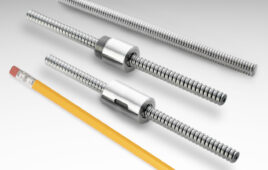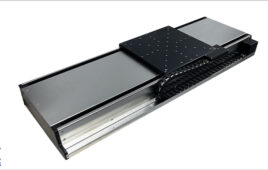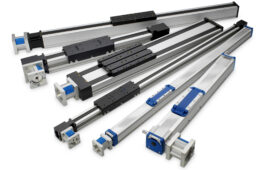Although there are more than a dozen symptoms of premature wear and impending failure for V-belts — ranging from visible damage to audible noise — there are a few key ways that these friction-based belts can fail during operation. To help users determine the root cause of a failure or signs of potential failure, V-belt manufacturers provide troubleshooting guides that suggest causes and remedies for a wide range of issues. Here, we’ll look at five common ways that V-belts can fail and the most probable causes of each condition.

Image credit: Gates
Broken belt
The most clear sign of accelerated belt wear or failure is a broken belt, which typically indicates that the tensile cords have been damaged. Damage to these load-carrying members can be caused by severe shock loads during operation or by using a belt that’s under-sized for the application.
Tensile cord damage can also occur if the belt is pried or rolled onto the sheave during installation. In extreme cases, foreign objects in the drive can damage the belt severely enough to cause breakage.

Image credit: Gates
Edge cord damage
Edge cord damage or failure can be a product of sheave misalignment, which causes the belt to track unevenly and, in some cases, twist during operation. Damaged tensile cords (see above) can also lead to edge cord damage or failure.
Belt comes off the sheave
During operation, if the belt comes off the sheave or turns over, this can indicate misaligned pulleys or contamination in the drive. Other conditions that can cause the belt to jump off the sheave or turn over include insufficient belt tension, significant vibrations in the drive, and shock loads.

Image credit: Timken
Failure to carry the load
A belt that’s unable to carry the designed load will often slip and is an indication that the drive is improperly sized or has insufficient tension. If sizing and tension are found to be sufficient, other potential causes are damaged tensile cords or worn sheave grooves.
Abnormal wear
Any abnormal wear – whether on the top, bottom, sides, or grooves of the belt – can indicate a problem in the application. Wear on the top or bottom corners of the belt is often caused by a poor fit between the belt and the sheaves, due to incorrect sizing or due to wear on the sheaves. Wear on the bottom of the belt is also a sign of poor fit between the belt and the sheaves, although debris in the drive can also cause bottom surface wear.
If belt surfaces — especially the belt sidewalls or the top surface — become hard or stiff, this can indicate that the belt is slipping (which increases heat and friction), or that it has been exposed to excessive heat from the environment or the process. Similarly, contamination from oil other chemicals can cause the belt — in this case, typically the top surface — to swell or become flaky or sticky.

Image credit: Timken
Filed Under: Linear Motion Tips




